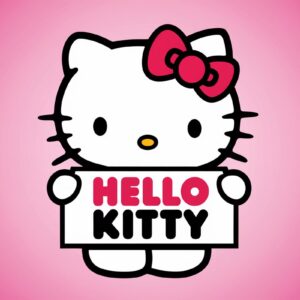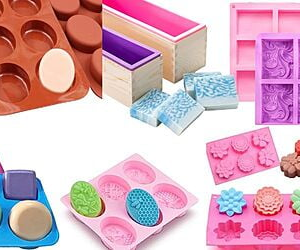The color pink, often associated with cuteness and charm, is deeply tied to the image of Hello Kitty, one of the most recognizable characters in pop culture. Over the years, Hello Kitty has grown from a simple character into a global icon, and the aesthetic associated with her, especially the “pink:cmxa0qcysjw= hello kitty” trend, has contributed significantly to her enduring popularity.
This article will explore why the pink aesthetic is so closely linked to Hello Kitty, how it has shaped her global appeal, and why it continues to attract new fans around the world. We’ll also delve into the broader influence of Hello Kitty on fashion, design, and pop culture, all while optimizing for the keyword “pink:cmxa0qcysjw= hello kitty” and its related terms.
The Evolution of Hello Kitty’s Pink Aesthetic
Since Hello Kitty was first introduced in 1974 by the Japanese company Sanrio, she has been a symbol of cuteness and simplicity. Her original design, though simple—a white cat with a red bow and no visible mouth—has become iconic worldwide. However, the pink aesthetic associated with her has gradually evolved to become a hallmark of the Hello Kitty brand.
In many iterations of Hello Kitty merchandise and promotional material, pink has become the dominant color. This is not by accident. The color pink evokes feelings of sweetness, innocence, and youthfulness, which aligns perfectly with the Hello Kitty brand image. From plush toys and stationery to apparel and accessories, pink is everywhere in the Hello Kitty universe, creating a cohesive and attractive look that resonates with fans of all ages.
Pink:CMXA0QCYSJW= Hello Kitty as a Symbol of Global Fashion
Hello Kitty’s pink aesthetic has not only captured the hearts of children but also found a place in fashion and design. The “pink:cmxa0qcysjw= hello kitty” trend has influenced fashion designers, artists, and even high-end luxury brands. For example, collaborations between Hello Kitty and brands like Puma, Balenciaga, and Swarovski have brought the pink aesthetic into high fashion, making it accessible to a more mature audience.
The pink aesthetic represents more than just a color; it’s a lifestyle for many Hello Kitty fans. The character’s influence extends into home décor, beauty products, and even tech gadgets, all of which often feature the signature pink hue that fans have come to adore. In this way, Hello Kitty has transcended from a simple character to a symbol of femininity and charm in fashion and everyday life.
Why Pink? The Psychology Behind the Color
The choice of pink as a dominant color for Hello Kitty’s branding is not random. The psychology of color plays a big role in branding, and pink is associated with calmness, love, and care. This makes it the perfect color for a character like Hello Kitty, who embodies friendliness, gentleness, and fun. These emotional associations help solidify Hello Kitty’s appeal to both children and adults.
Moreover, pink has become synonymous with kawaii culture, a Japanese trend that emphasizes cuteness in all forms. Hello Kitty is arguably the most well-known figure of kawaii culture, and her pink aesthetic has contributed to the global spread of this trend. In a way, “pink:cmxa0qcysjw= hello kitty” represents the essence of kawaii culture itself, making the character a cultural ambassador for Japan’s unique sense of style and whimsy.
Hello Kitty’s Appeal Across Generations
One of the most remarkable aspects of Hello Kitty’s pink aesthetic is its appeal across generations. While initially targeted at young girls, Hello Kitty has garnered a significant following among teens, adults, and even seniors. The character has become a nostalgic symbol for many, reminding them of their childhood, but at the same time, it continues to attract new fans.
The “pink:cmxa0qcysjw= hello kitty” trend has played a crucial role in this cross-generational appeal. The aesthetic strikes a balance between youthful innocence and stylish elegance, making it suitable for fans of all ages. Whether through clothing, home décor, or digital merchandise, Hello Kitty’s pink image has a timeless quality that continues to evolve with the times.
Hello Kitty and the Influence of Pink in Pop Culture
The influence of Hello Kitty’s pink aesthetic extends far beyond just her fanbase. In pop culture, Hello Kitty has been referenced in music, television, and even video games. Celebrities like Lady Gaga and Avril Lavigne have publicly embraced Hello Kitty merchandise, incorporating the pink aesthetic into their own personal style.
Hello Kitty has also made appearances in television shows and movies, further embedding her image into popular culture. The pink aesthetic associated with Hello Kitty is instantly recognizable, which makes her an ideal subject for pop culture references. The “pink:cmxa0qcysjw= hello kitty” phenomenon shows how a simple color and character design can have a lasting impact on global entertainment.
The Business Behind Pink:CMXA0QCYSJW= Hello Kitty
Sanrio, the company behind Hello Kitty, has been strategic in leveraging the pink aesthetic to build a global business empire. With Hello Kitty-themed cafes, amusement parks, and even airplanes, Sanrio has turned Hello Kitty into a global brand worth billions of dollars. The “pink:cmxa0qcysjw= hello kitty” branding has played a key role in this success, making Hello Kitty products instantly recognizable and desirable across different cultures and regions.
In addition to consumer products, Hello Kitty’s pink branding has influenced collaborations with major brands and events. For example, Hello Kitty has been the face of breast cancer awareness campaigns, further associating the color pink with important causes. This has enhanced the brand’s appeal to a broader, more socially conscious audience.
Hello Kitty’s Digital Presence and the Rise of Pink Online
In the digital age, Hello Kitty has not been left behind. Social media platforms, online communities, and mobile apps have embraced Hello Kitty’s pink aesthetic. Fans from around the world share Hello Kitty-themed content, much of it featuring the signature pink color. Whether it’s fan art, memes, or product reviews, the “pink:cmxa0qcysjw= hello kitty” trend continues to thrive online, keeping the brand relevant in a rapidly changing digital landscape.
Moreover, the rise of influencer marketing has helped spread Hello Kitty’s pink aesthetic even further. Influencers, both big and small, often feature Hello Kitty-themed products in their content, introducing the brand to new audiences and reinforcing the popularity of the pink aesthetic.
The Future of Pink:CMXA0QCYSJW= Hello Kitty
Looking ahead, the “pink:cmxa0qcysjw= hello kitty” trend shows no signs of slowing down. With constant collaborations, new product launches, and a growing digital presence, Hello Kitty’s pink aesthetic will continue to capture the hearts of fans worldwide. As Hello Kitty enters new markets and reaches new generations, the pink aesthetic will remain a vital part of her identity.
What’s next for Hello Kitty? The brand may expand further into digital products like NFTs and virtual reality experiences, all while keeping the pink aesthetic central to its identity. As long as Hello Kitty stays true to her pink roots, she will remain a beloved figure for generations to come.
FAQs
1. What does the keyword “pink:cmxa0qcysjw= hello kitty” represent?
It refers to the pink aesthetic closely associated with Hello Kitty, symbolizing her charm, cuteness, and global appeal.
2. Why is pink so important to Hello Kitty?
Pink is associated with youthfulness, sweetness, and femininity, aligning perfectly with Hello Kitty’s brand image.
3. How has Hello Kitty’s pink aesthetic influenced fashion?
The pink aesthetic has inspired collaborations with luxury brands, making Hello Kitty a fashion icon.
4. Is Hello Kitty’s pink aesthetic popular with adults?
Yes, Hello Kitty’s pink aesthetic appeals to a wide audience, including teens and adults who see her as a symbol of nostalgia and style.
5. How does the pink aesthetic contribute to Hello Kitty’s global success?
The pink aesthetic makes Hello Kitty instantly recognizable and marketable across cultures, boosting her international appeal.
6. Has Hello Kitty’s pink aesthetic influenced pop culture?
Absolutely. Hello Kitty has appeared in music, TV, and fashion, with her pink image becoming a symbol in pop culture.
7. Why is Hello Kitty popular online?
Her pink aesthetic is highly shareable on social media, and she has a strong presence in fan communities and digital content.
8. What role does the pink color play in Hello Kitty merchandise?
Pink is a dominant color in Hello Kitty products, creating a cohesive and attractive visual identity.
9. How has Hello Kitty influenced kawaii culture?
Hello Kitty is one of the most prominent figures in kawaii culture, with her pink aesthetic embodying the essence of cuteness.
10. What’s the future of Hello Kitty’s pink aesthetic?
The pink aesthetic will continue to evolve, especially in digital spaces like social media and virtual experiences, while staying true to its roots.
Conclusion
Hello Kitty’s enduring appeal is deeply tied to her iconic pink aesthetic, which has become a symbol of cuteness, charm, and elegance worldwide. The “pink= hello kitty” trend reflects the power of simplicity and emotional connection through color. From childhood memories to high fashion, Hello Kitty has transcended generations and cultures, maintaining her status as a global icon. Her pink aesthetic not only drives merchandise but also influences fashion, pop culture, and digital communities. As Hello Kitty continues to evolve, her signature pink will remain central to her identity, ensuring she stays relevant for future generations. Whether in collaborations or digital spaces, Hello Kitty’s pink aesthetic will continue to captivate hearts around the world.




